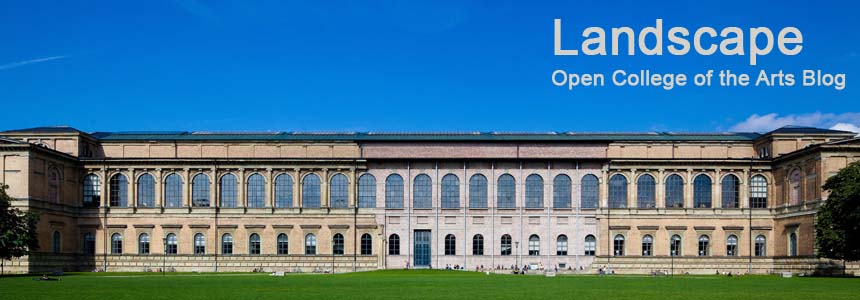Another boost to my work and enthusiasm has been one of the best Christmas gifts I have ever received, a Fujifilm Finepix X100. This modern reinterpretation of the classic rangefinder has provided me with a small compact camera delivering excellent quality images.

The project called for shots of a silhouetted landscape which included a strong reflection in the foreground. The best location for this is the lake opposite to the Seehaus beer garden, although on my way I also shot a sequence over the river Isar. I chose a late afternoon time when the sun would be dropping close to the horizon. My first task was to shoot a number of sequences with +2, +1, 0, -1, and -2 eV exposure compensation. I metered the scene without any special adjustment for the sun. I have selected 3 of these sequences:
Looking at each sequence the best combination of light and dark appears to come from the exposure with -1eV compensation. As the text suggests the darker the shot, the harder it is to make out the silhouette, however, these photographs have no post processing:
Adding some foreground light and adjusting the contrast has better balanced the image. In the age of digital my approach to this kind of image would be to automatically bracket the image around an average exposure, reviewing both the shot and histogram immediately after capture.
Not content with these images I headed back to the park the following morning to further test the camera and also continue my Transient Light work. I deliberately looked for images that combine silhouette with reflection, but this time without the help of a large lake. My first image is pre-dawn, so no sun stars and the silhouette is used to add some depth to what would otherwise be a very bland image
Moving into a position to capture the rising sun as it shone behind single or multiple trees, I captured the following . I have very deliberately used the silhouette of the trees to add drama to the image:
I was also lucky to see ground fog once again, first time for at least 4 weeks.
In all of these shots I have taken advantage of the mist to create shadows in the trees. The next photograph tries to extend the graphical element of the sun star into the tree shadows. This is a possible addition to the keepers list for assignment 3.
I also tried out the new camera with a few shots in the mode of assignment 3, but not in the context of this project:
All of these are pretty much as I would have expected from the 5D. I also shot a number of frames of subjects without any connection to the course, just looking at the cameras abilities. This is a curious crow that thought I might be carrying some food.
Next I shot a couple of woodland scenes to check out the colour and detail capture.
Some buildings:
And finally detail of a bush covered in frost
Overall the camera is a joy to use and very intuitive, I could use it with confidence within minutes of picking it up. The controls are obvious and tactile, Aperture is changed by rotating a device on the lens barrel, Speed with a surface mounted dial. In all a 1950's camera containing 2011 technology!
Back to the project - a good exercise, one that builds upon stylistic elements that I have been including in my imagery during the last few months. Not a lot of new ground, but useful reinforcement.





















No comments:
Post a Comment